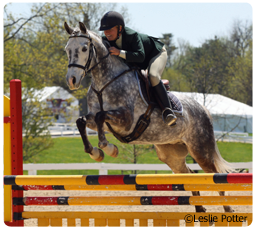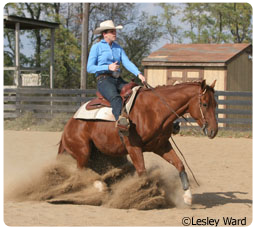
Degenerative joint disease (DJD) is the most common musculoskeletal issue in horses. A complex medical issue with multitudes of causes, many horse owners are all-too familiar with the chronic lameness, stiffness, swelling, and even quality of life and career-ending issues this condition can cause. Maintaining proper joint health regardless of your horse’s age is key in slowing the development of DJD. Read on for advice on how you can help your horse’s joints stay sound and healthy from now through his senior years.
By basic laws of physics overweight horses put more force and strain on their joints as compared to horses of adequate bodyweight. Ensuring your horse maintains a proper bodyweight throughout his life greatly reduces the day-to-day stress on his joints. Using a girth tape at regular time intervals can give you a reasonable estimate of your horse’s weight. Pairing this up with another action, such as deworming, will help you get in the habit of regularly monitoring bodyweight. Measuring your horse’s bodyweight during deworming is also a good way to make sure you are properly dosing medications.
Using a body condition score (BCS) scale from one (poor/emaciated) to nine (extremely fat), horses should be around a five, which is considered “moderate” body condition. If you are using body condition scoring to evaluate your horse’s weight, be sure to validate your visual assessments occasionally with a weight tape since body condition scoring is considered a fairly subjective measurement.
2. Hoof health
Regular visits from the farrier are key not only from a hoof health perspective, but also from a joint health perspective. Even if your horse does not wear shoes, a properly trimmed and balanced hoof ensures the forces when the horse is moving are as equally dispersed as they can be up the leg. Being long in the toe or heel creates an offset in the alignment of the long bones of the legs, thereby exerting uneven repetitive stress on joints such as the knee, fetlock, and hock. Over time, this can result in chronic low-grade joint damage.
It is also important to note that shoes are not necessarily a requirement for good joint health. Whether a horse wears shoes and what kind of shoes is highly dependent on the horse’s own conformation, hoof physiology, and what he is being asked to do under saddle.
3. Maintain fitness
DJD is the most debilitating after periods of inactivity. As a horse moves around, joint fluid is more easily circulated which helps flush out inflammatory cells and increase joint lubrication. As a horse ages, although his activity level may drastically decrease, it should not be entirely stopped. Small regular amounts of riding under saddle or even hand walking can help keep joints loose in an older horse. For horses that are confined to a stall, there are a variety of stretching exercises that, if done regularly, can help maintain range of motion in the lower joints.
For younger horses training to reach a certain fitness level, riders should be aware of how a training plan is affecting the joints. While it is true that a certain level of stress on the joints and bones is necessary for bone development and strength, too much stress can result in joint damage. Be cognizant about footing when training and avoid excessively repetitive exercises during a single ride. Also keep in mind that for those individuals undergoing highly demanding physical training, rest days are just as valuable for a horse’s musculoskeletal system as work days.
4. Proper nutrition
For young horses still growing as well as those training, nutrition is extremely important for bone and joint development. An imbalance in minerals such as calcium and phosphorous and too much or too little protein in a diet can impair skeletal development, especially when coupled with demanding exercise under saddle. Consult with your veterinarian frequently on your young horse’s diet, as requirements will be different on an individual basis and will also change as the horse ages.

5. Early detection
As your horse progresses through his career, regular veterinary examinations will help alert you to potential joint problems. There is no cure for DJD but early detection and institution of proper management can slow its progression. Likewise, if you begin to notice a slight lameness or stiffness, don’t ignore it or only treat symptomatically with a non-steroidal anti-inflammatory such as phenylbutazone (Bute). Instead, talk to your vet. Further diagnostics such as radiographs (x-rays) may be done to further examine what is going on and the extent of damage.
6. Not all joint supplements are created equal
The market for equine joint supplements is extremely large and can be both confusing and intimidating. Multitudes of products, all with different ingredients or combinations of ingredients, different dosage forms, and different amounts of active ingredients make for choosing a particular product for your horse difficult. Most joint supplements contain one or more of the following: chondroitin sulfate, glucosamine, or hyaluronic acid. These compounds are building blocks for cartilage within a joint and by supplementing them, they can help maintain the horse’s joint cartilage and help repair cartilage that is slightly worn. However, these supplements are not regulated by the FDA and can have widely varied ingredient concentrations depending on the brand. Always consult your veterinarian before starting your horse on a joint supplement. Read the label together, calculate the appropriate dose, and discuss the expected benefits.
Management to help ensure proper joint health is something that should be initiated early in a horse’s life and continued through to old age. Fortunately, many of the other aspects horse owners frequently consider when keeping their horses healthy also carry over to maintaining sound joints as well.
Back to all course materials >>





Great article.